I am presenting the new Tonal app for macOS (the old one here), which defines a better way to build and experience your audiophile music collection.
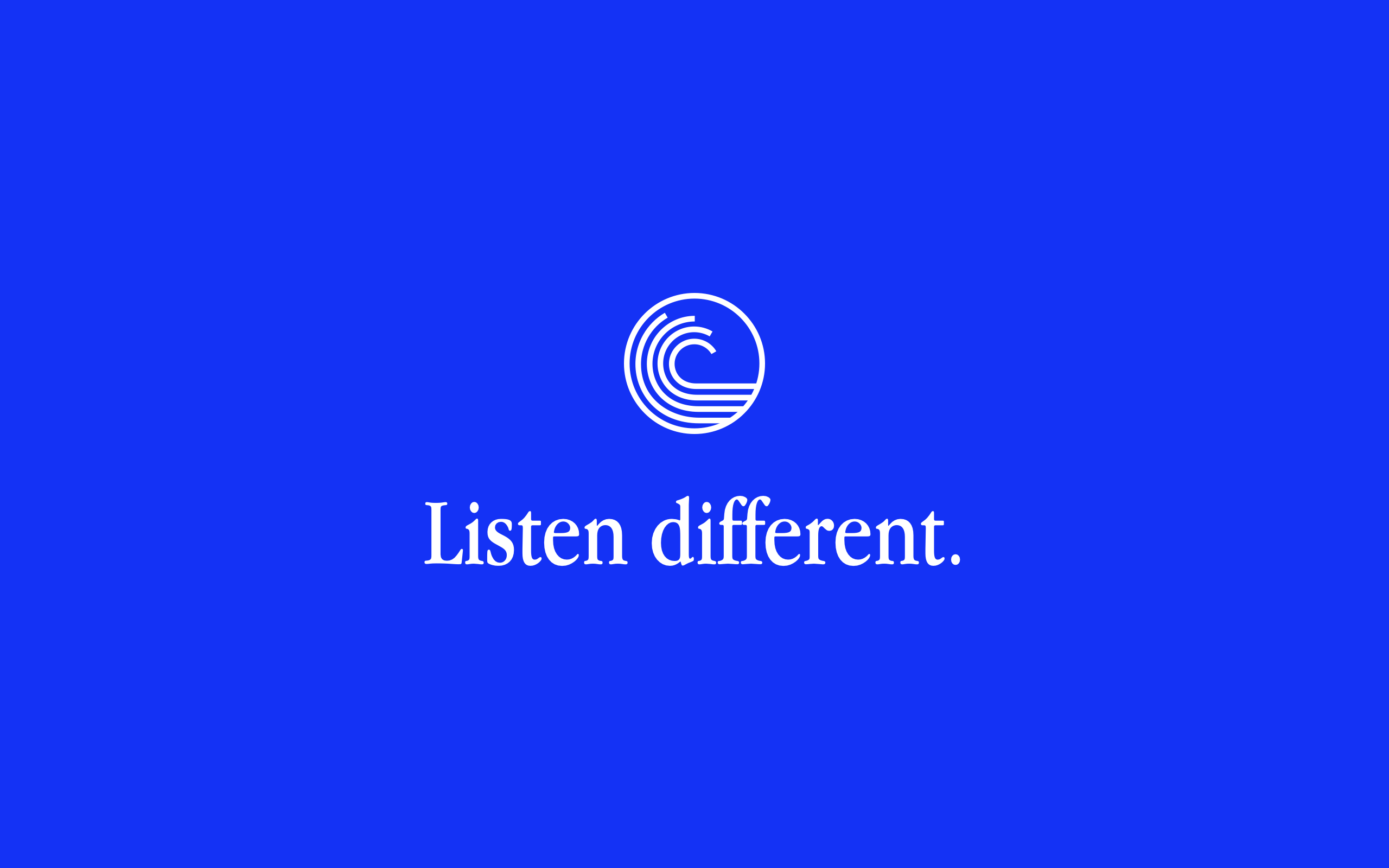
To structure Tonal’s specifications and features in a compact yet engaging way, I list ten opinionated principles for good (software audiophile) players. I want to keep the post as short as possible.
1. GOOD PLAYERS ARE INNOVATIVE
Tonal introduces a new audio file format, a feather-light playback engine, and a groundbreaking music metadata solution. Built on these foundational innovations, Tonal creates its category.
2. GOOD PLAYERS ARE PREDICTABLE
Tonal collects music into .tonal audio files — a lightweight audio format containing pure PCM or DSD data of a complete disc in a standardized encoding. The effects of different codecs and/or parameters are completely eliminated before playback.
3. GOOD PLAYERS HAVE CONSTRAINTS
Tonal rejects lossy audio and incomplete discs. Red Book discs must be AccurateRip verified. Don’t worry, CUETools is included to fix broken rips automatically. Remember, we’re curating, not just collecting. These constraints make the playback even more confident and predictable. These constraints, in the end, set you free.
4. GOOD PLAYERS ARE ACCURATE
Tonal is always bit-perfect. The whole app is engineered bottom-up from an audiophile engine that is canonical and featherweight —— only 4 SLOC in C (the theoretical minimum code footprint). Tonal also offers fine volume control at your DAC’s native resolution, enhancing your Mac’s native experience.
5. GOOD PLAYERS REQUIRE NO CONFIGURATION
Tonal has preferences, but no settings, not a single. No need to tweak checkboxes, pickers, or sliders for optimal audiophile performance. Tonal automatically measures and optimizes all parameters on your Mac before the first note is played. Discuss the music and the sound with your friends, not the settings.
6. GOOD PLAYERS MAKE DURABLE COLLECTIONS
.tonal audio files contain no music tag, making them absolutely stable once created. Collectors always hold bit-identical .tonal audio files for the same (commercially available) audio disc. Also, there is no duplicate music on your storage.
7. GOOD PLAYERS ARE RESPONSIBLE
Indexing your music collection using proprietary metadata sources is irresponsible: they may not last long.
Tonal relies on only one metadata source: the Tonal disc catalog. Edit metadata easily in the browser-based Tonal Editor, which syncs your collection in real-time. The catalog is licensed under the (not revocable) CC BY-NC-ND 4.0. Your collection and the metadata must outlast Tonal.
8. GOOD PLAYERS EMPOWER COLLABORATIONS
Collaboration is the spirit of our community. The Tonal disc catalog is contributed solely by Tonal users —— community collaboration on music metadata is finally real.
Improve data quality, or establish a style guide, there are many things you can do! Imagine a published discography of [name your favorite pianist] with your name on it —— Tonal can make it happen.
9. GOOD PLAYERS ARE LOCAL
Tonal is local first. You create no account to use Tonal. You can play and explore all your collections without a network connection. You can migrate or rebuild your entire library even without Tonal backend services.
Tonal is subscription-free. Buy once and use forever. Apple wants developers to switch to a subscription model, which simply does not align with Tonal’s philosophy.
10. GOOD PLAYERS ARE AS SIMPLE AS POSSIBLE
Tonal does not treat the UI like a bazaar, letting recommendations, portraits, biographies, audio metadata, and various controls compete for your attention. Tonal is just 25 MB (universal build runs natively on Apple silicon and Intel-based Macs). Tonal wants to be a tool —— a simple, precise, predictable, and working tool.
A Plex-like app that monitors your folders and grabs music metadata automatically works well until it fails.
No commercially available music metadata source meets Tonal’s standard, especially for classical music. You need to do it yourself. You must also learn a new language (see the complete user guide to learn more).
Seriously? Why?
As an Asian, organizing (think Marie Kondo here, not MBA courses) is deeply rooted in my mind and body. When practicing organizing, my philosophy pivots around two points:
Tonal is neither for everyone nor for every audio file on your disk. Please read the complete user guide at least twice. The website may also help you understand Tonal’s purpose. I am glad to answer any unanswered questions here.
Here are some screenshots that recap how Tonal works:
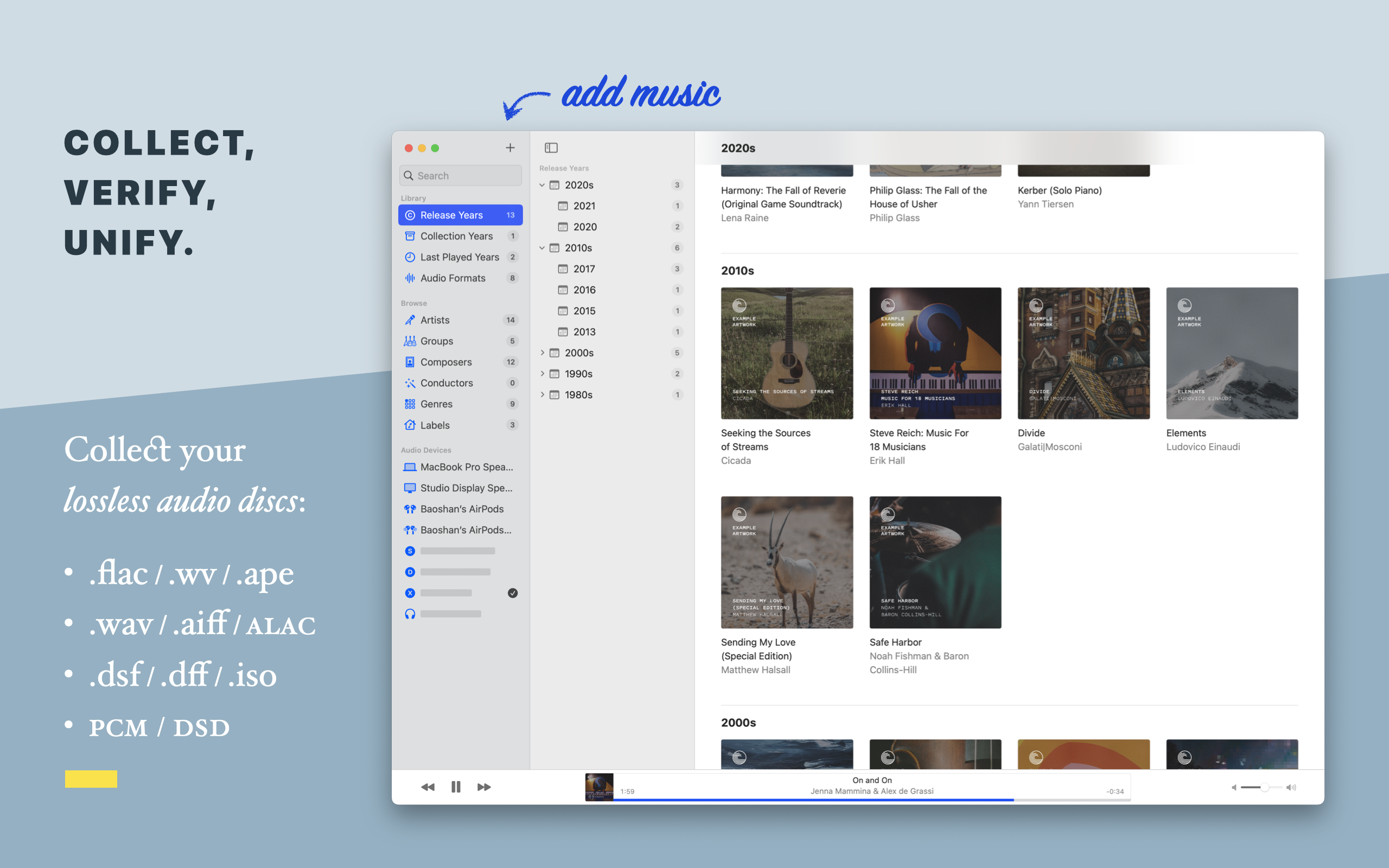
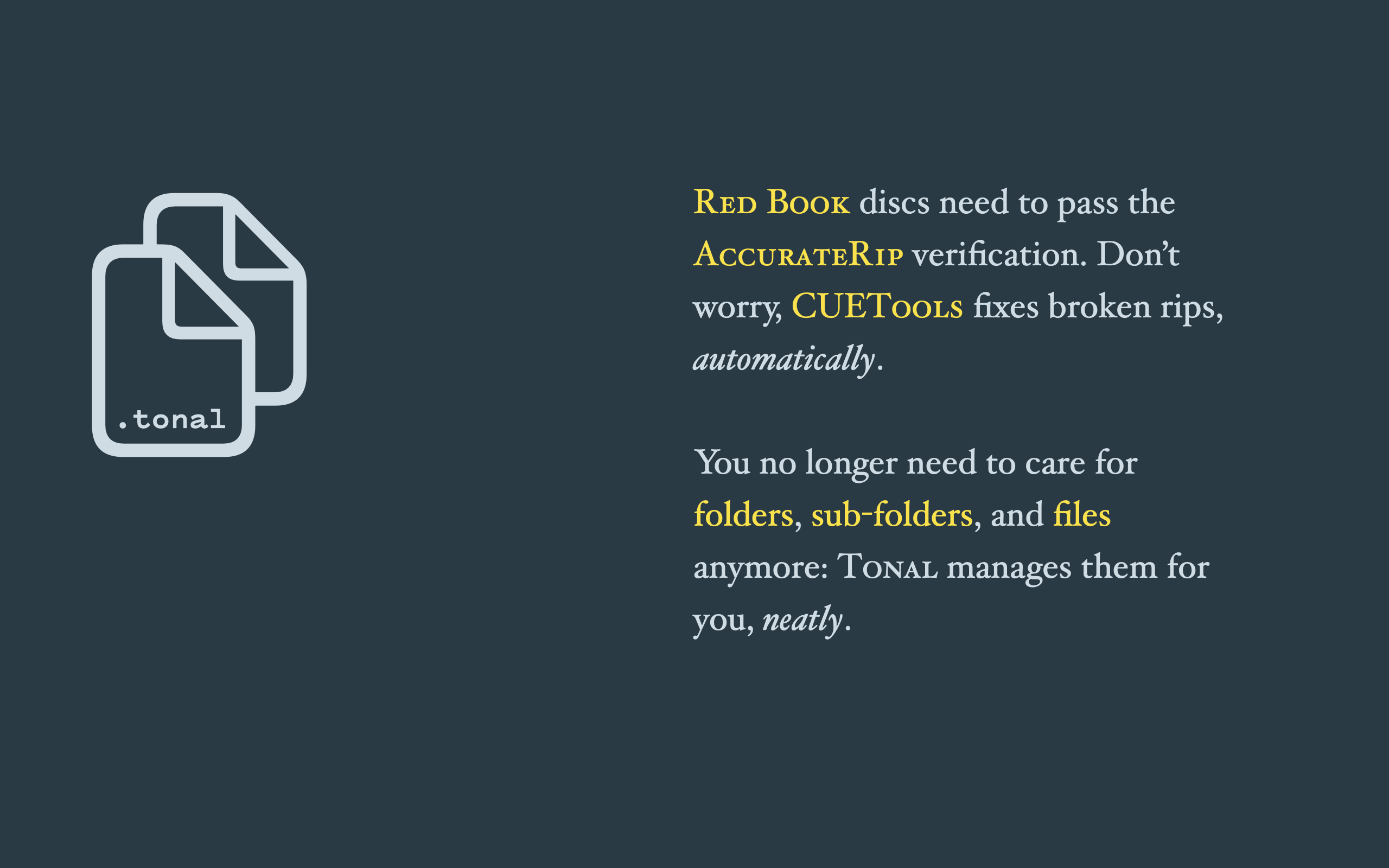
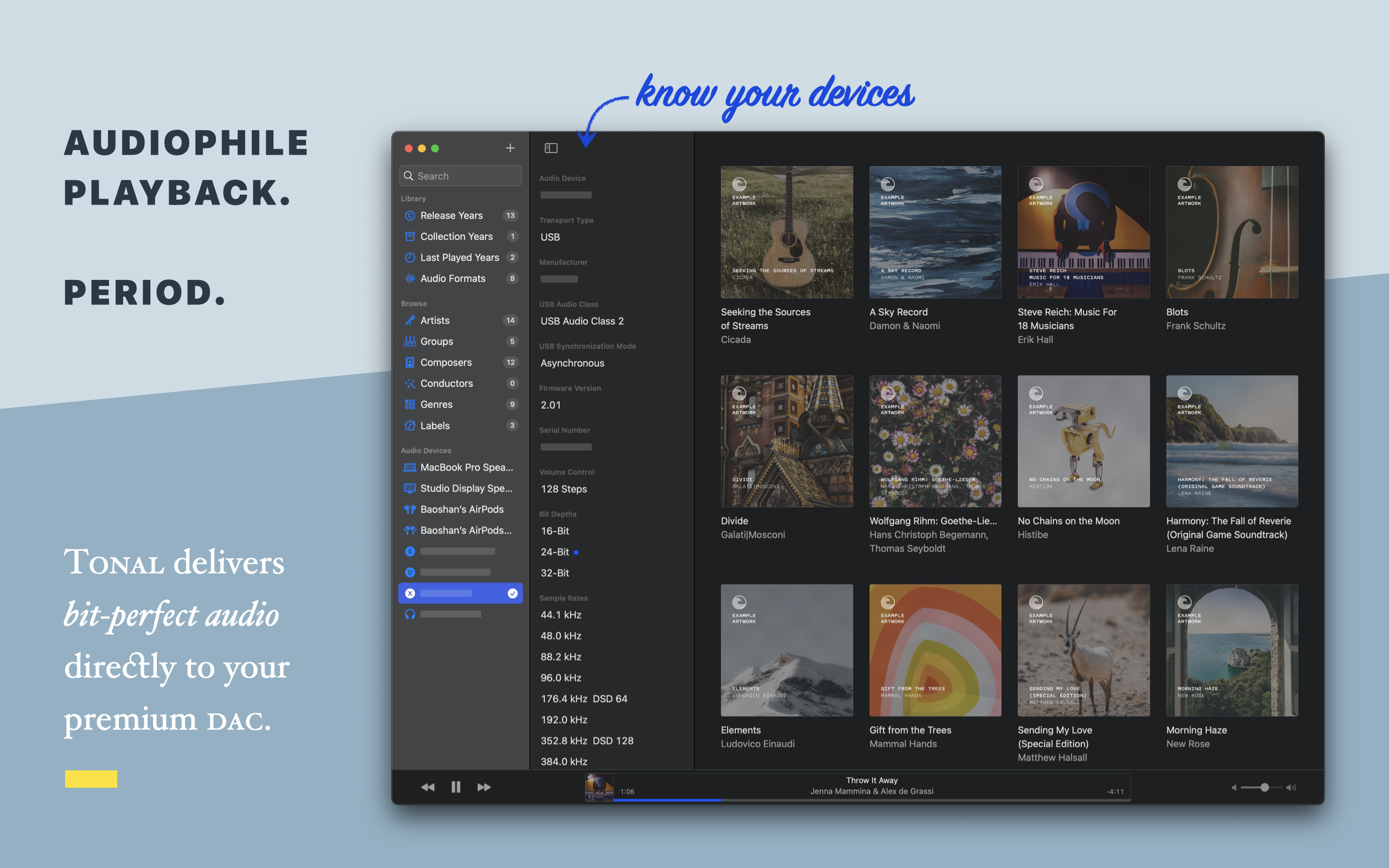



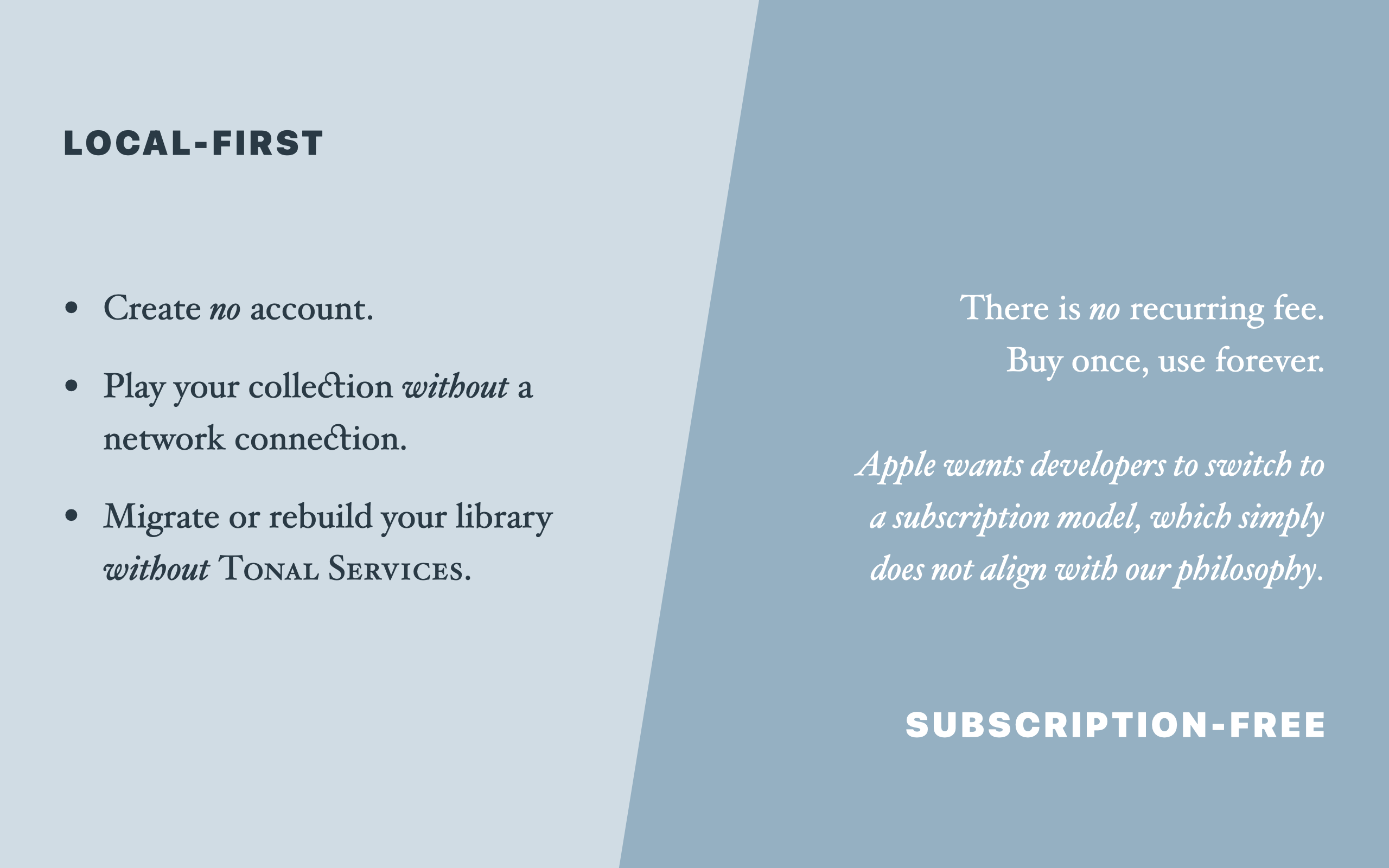
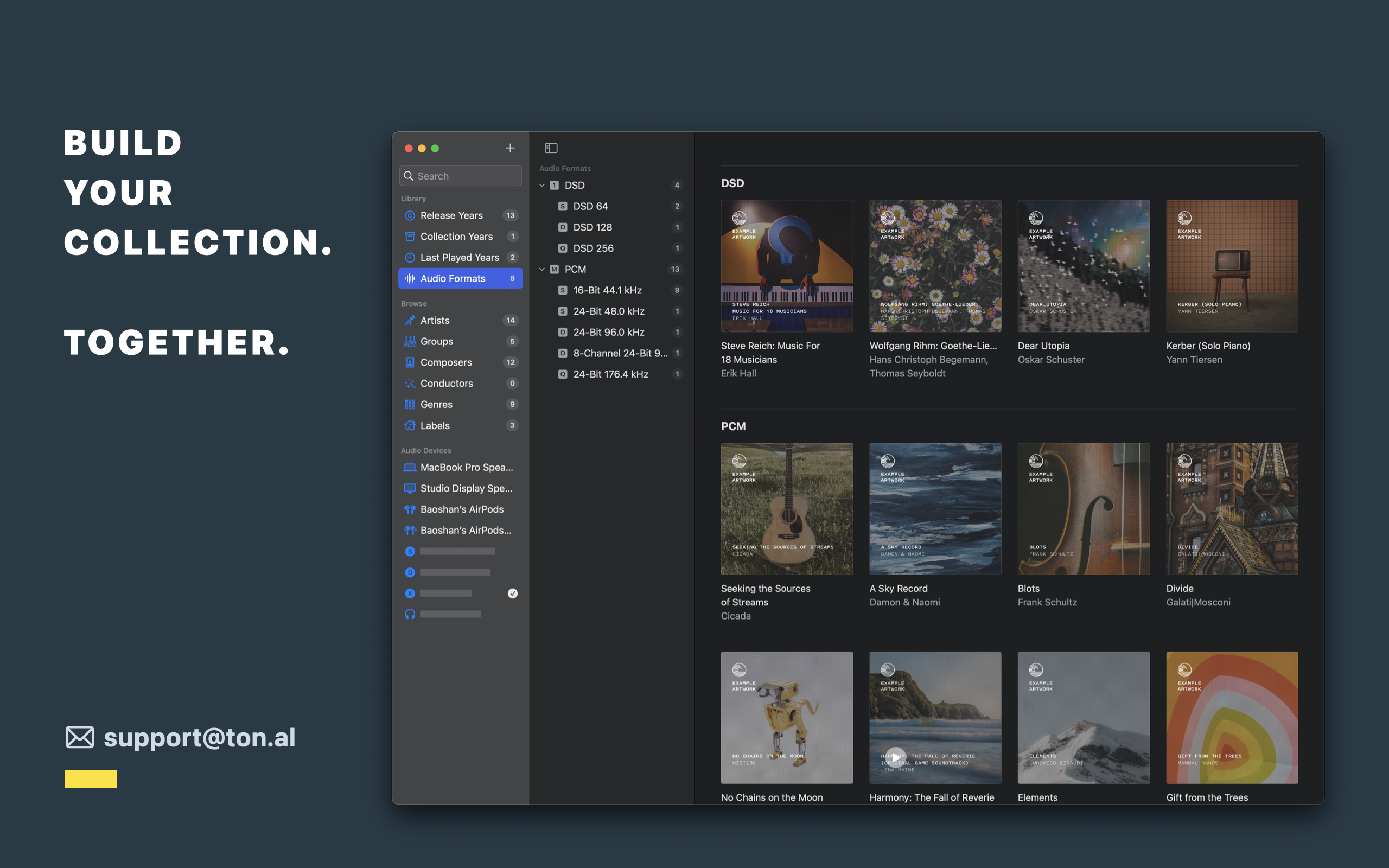
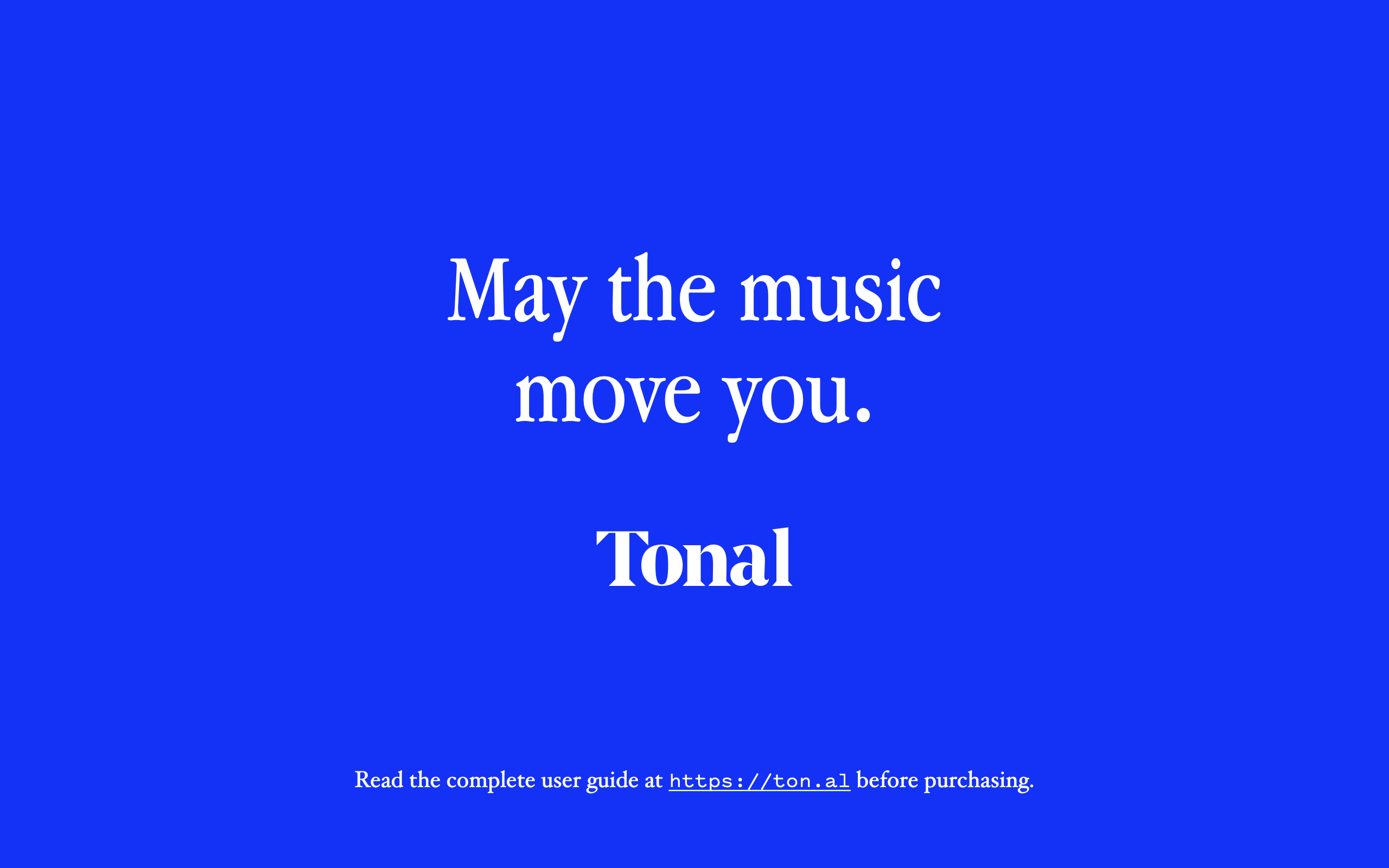
There will be no free trial during the introductory period (no plan afterward). I prioritize finding people who know Tonal is their long-awaited missing piece and helping them onboard.
Thanks to David Chesky for keeping me motivated and confirming that “The sound is really nice.. !!!!”. Thanks to Kirk McElhearn for being the first user while he was busy reporting WWDC.
This is my 20th year working on the classical music database I dreamed of, my 10th year working on Tonal, and the epoch year of the new Tonal app. Thanks to music! Thank you all!
The playback quality of the old Tonal app was well received, I also found a post on Roon’s forum praising its playback quality. The new Tonal app shares the exact same renderer (only 4 SLOC in C). FYI.

To structure Tonal’s specifications and features in a compact yet engaging way, I list ten opinionated principles for good (software audiophile) players. I want to keep the post as short as possible.
TEN PRINCIPLES FOR GOOD PLAYERS
1. GOOD PLAYERS ARE INNOVATIVE
Tonal introduces a new audio file format, a feather-light playback engine, and a groundbreaking music metadata solution. Built on these foundational innovations, Tonal creates its category.
2. GOOD PLAYERS ARE PREDICTABLE
Tonal collects music into .tonal audio files — a lightweight audio format containing pure PCM or DSD data of a complete disc in a standardized encoding. The effects of different codecs and/or parameters are completely eliminated before playback.
3. GOOD PLAYERS HAVE CONSTRAINTS
Tonal rejects lossy audio and incomplete discs. Red Book discs must be AccurateRip verified. Don’t worry, CUETools is included to fix broken rips automatically. Remember, we’re curating, not just collecting. These constraints make the playback even more confident and predictable. These constraints, in the end, set you free.
4. GOOD PLAYERS ARE ACCURATE
Tonal is always bit-perfect. The whole app is engineered bottom-up from an audiophile engine that is canonical and featherweight —— only 4 SLOC in C (the theoretical minimum code footprint). Tonal also offers fine volume control at your DAC’s native resolution, enhancing your Mac’s native experience.
5. GOOD PLAYERS REQUIRE NO CONFIGURATION
Tonal has preferences, but no settings, not a single. No need to tweak checkboxes, pickers, or sliders for optimal audiophile performance. Tonal automatically measures and optimizes all parameters on your Mac before the first note is played. Discuss the music and the sound with your friends, not the settings.
6. GOOD PLAYERS MAKE DURABLE COLLECTIONS
.tonal audio files contain no music tag, making them absolutely stable once created. Collectors always hold bit-identical .tonal audio files for the same (commercially available) audio disc. Also, there is no duplicate music on your storage.
7. GOOD PLAYERS ARE RESPONSIBLE
Indexing your music collection using proprietary metadata sources is irresponsible: they may not last long.
Tonal relies on only one metadata source: the Tonal disc catalog. Edit metadata easily in the browser-based Tonal Editor, which syncs your collection in real-time. The catalog is licensed under the (not revocable) CC BY-NC-ND 4.0. Your collection and the metadata must outlast Tonal.
8. GOOD PLAYERS EMPOWER COLLABORATIONS
Collaboration is the spirit of our community. The Tonal disc catalog is contributed solely by Tonal users —— community collaboration on music metadata is finally real.
Improve data quality, or establish a style guide, there are many things you can do! Imagine a published discography of [name your favorite pianist] with your name on it —— Tonal can make it happen.
9. GOOD PLAYERS ARE LOCAL
Tonal is local first. You create no account to use Tonal. You can play and explore all your collections without a network connection. You can migrate or rebuild your entire library even without Tonal backend services.
Tonal is subscription-free. Buy once and use forever. Apple wants developers to switch to a subscription model, which simply does not align with Tonal’s philosophy.
10. GOOD PLAYERS ARE AS SIMPLE AS POSSIBLE
Tonal does not treat the UI like a bazaar, letting recommendations, portraits, biographies, audio metadata, and various controls compete for your attention. Tonal is just 25 MB (universal build runs natively on Apple silicon and Intel-based Macs). Tonal wants to be a tool —— a simple, precise, predictable, and working tool.
“Technology is nothing. What’s important is that you have faith in people, that they’re basically good and smart -- and if you give them tools, they’ll do wonderful things with them. Tools are just tools. They either work, or they don’t work.”
—— Steve Jobs
BUILD YOUR AUDIOPHILE COLLECTION THE HARD WAY
A Plex-like app that monitors your folders and grabs music metadata automatically works well until it fails.
No commercially available music metadata source meets Tonal’s standard, especially for classical music. You need to do it yourself. You must also learn a new language (see the complete user guide to learn more).
Seriously? Why?
As an Asian, organizing (think Marie Kondo here, not MBA courses) is deeply rooted in my mind and body. When practicing organizing, my philosophy pivots around two points:
- Good methodologies are usually hard to get started; a great one may be even harder (if not the hardest) and demands a lifetime commitment.
- Measure the entropy (as in information theory, represents uncertainty) and reduce it to the minimum. You need to fight hard for this, at all costs, for all the time.
Tonal is neither for everyone nor for every audio file on your disk. Please read the complete user guide at least twice. The website may also help you understand Tonal’s purpose. I am glad to answer any unanswered questions here.
Here are some screenshots that recap how Tonal works:









CODA
The new Tonal app is available for pre-order today and is expected to be released on June 30. The introductory price is $99.99 (50% off the regular price). You won’t be charged until the day Tonal is released for download.There will be no free trial during the introductory period (no plan afterward). I prioritize finding people who know Tonal is their long-awaited missing piece and helping them onboard.
ACKNOWLEDGEMENTS
Gratitude to David Bryant (WavPack), Matt Ashland (Monkey’s Audio), and Grigory Chudov (CUETools) for your excellent work and kind support. Thanks to Mr. Spoon (dBpoweramp) for allowing Tonal to access the AccurateRip database. Thanks to Grigory Chudov, again, for allowing Tonal to access the CUETools database.Thanks to David Chesky for keeping me motivated and confirming that “The sound is really nice.. !!!!”. Thanks to Kirk McElhearn for being the first user while he was busy reporting WWDC.
This is my 20th year working on the classical music database I dreamed of, my 10th year working on Tonal, and the epoch year of the new Tonal app. Thanks to music! Thank you all!
PS
The initial launch covers Canada, the United States, Ireland, the United Kingdom, Australia, New Zealand, and Singapore. The reason is simple: users collaborate on one single music metadata database (currently English). Please give me enough time to think about how more languages should be added.The playback quality of the old Tonal app was well received, I also found a post on Roon’s forum praising its playback quality. The new Tonal app shares the exact same renderer (only 4 SLOC in C). FYI.

